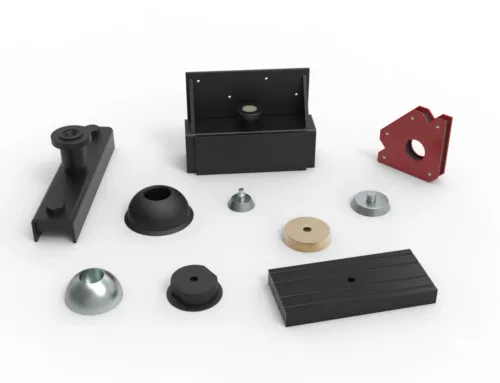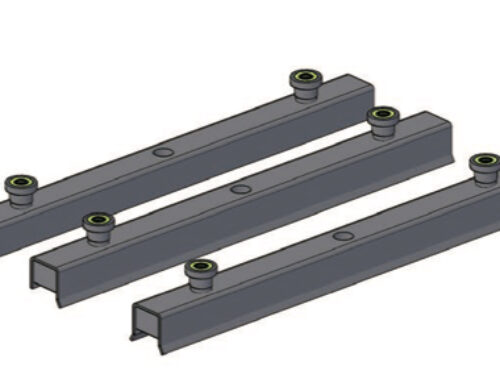If you’re aiming to understand how magnetic materials drive innovation across industries, you’re in the right place. From electric motors in the automotive world to cutting-edge renewable energy solutions, industrial applications of magnetic materials are shaping the future of manufacturing, electronics, and beyond. Whether you’re an engineer, researcher, or decision-maker, this post will give you a clear, practical look at how these materials power modern technology—and why choosing the right magnetic supplier, like NBAEM, makes all the difference. Let’s explore the vital role magnetic materials play in today’s industrial landscape.
Understanding Magnetic Materials
Magnetic materials are essential in many industries because they can generate, conduct, or respond to magnetic fields. They fall into several key types:
- Ferrites: Ceramic compounds often used in transformers and inductors due to their high electrical resistance and magnetic properties.
- Rare-earth magnets: Strong permanent magnets made from rare-earth elements like neodymium and samarium, widely used for high-performance applications.
- Soft magnets: Materials like silicon steel that easily magnetize and demagnetize, ideal for transformers and electric motors.
- Hard magnets: Permanent magnets that retain magnetization, commonly found in electric motors and sensors.
Key Magnetic Properties
| Property | Description |
|---|---|
| Magnetic Permeability | How easily a material can support a magnetic field. |
| Coercivity | The resistance of a magnetic material to becoming demagnetized. |
| Remanence | The level of residual magnetism after an external field is removed. |
Permanent Magnets vs Electromagnets
- Permanent magnets maintain a constant magnetic field without energy input.
- Electromagnets create magnetic fields only when electric current flows through them and can be turned on or off.
NBAEM’s Role
At NBAEM, we specialize in producing high-quality magnetic materials tailored for various industrial needs. Our expertise ensures materials with optimal magnetic permeability, coercivity, and remanence—key factors for enhanced performance across sectors. Whether you need ferrites, rare-earth magnets, soft or hard magnets, NBAEM delivers reliable, customized solutions designed for precision and durability.
Industrial Sectors Utilizing Magnetic Materials
Magnetic materials play a vital role across many industries here in the U.S. They help improve efficiency, performance, and reliability in a variety of applications. Here’s how different sectors leverage these materials:
Automotive Industry
- Electric motors and generators: Powering everything from traditional vehicles to electric and hybrid models.
- Sensors and actuators: Essential for advanced safety systems and vehicle control.
- Electric and hybrid vehicles: High-performance rare-earth magnets improve battery efficiency and motor power.
Electronics and Electrical Engineering
- Transformers and inductors: Critical for power management and voltage regulation in electronics.
- Magnetic storage devices: Hard drives and other data storage solutions rely heavily on advanced magnetic materials.
- Electric motors for appliances and power tools: Durable magnets ensure long-lasting performance in everyday household and industrial equipment.
Renewable Energy
- Wind turbine generators: Use strong magnets to convert wind energy into electricity efficiently.
- Magnetic bearings: Help reduce friction and maintenance in renewable energy systems.
Manufacturing and Automation
- Magnetic separation and lifting equipment: Key in sorting materials and heavy lifting safely in factories and recycling plants.
- Robotics and automated assembly: Magnetic components enable precise and reliable motion control.
Healthcare and Medical Devices
- MRI machines: Depend on powerful magnetic materials to produce clear, high-resolution images.
- Magnetic drug delivery and diagnostics: Emerging use of magnets to control targeted therapies and diagnostic tools.
These sectors rely on high-quality magnetic materials to meet strict demands, making suppliers like NBAEM essential for supporting U.S. industries with reliable, customized magnetic solutions.
Key Industrial Applications and Case Studies
Magnetic materials are at the heart of many industrial processes, making them essential for improving efficiency and performance across sectors.
Electric Motor Manufacturing
Magnetic materials directly impact the efficiency and power output of electric motors. High-quality rare-earth magnets enable motors to run cooler, last longer, and deliver stronger torque. This is especially true in automotive applications, where durability and energy efficiency are critical.
Magnetic Sensors and Switches
In industrial automation, magnetic sensors and switches play a big role in machine control and safety systems. These sensors rely on consistent magnetic properties to detect position, speed, or movement, helping streamline automated processes and reduce downtime.
Magnetic Separation in Metallurgy and Recycling
Magnetic separation equipment uses industrial magnets to sort metals from waste and streamline recycling. This technology boosts recovery rates of valuable metals and reduces contamination, making manufacturing more sustainable.
Renewable Energy Applications
Advanced magnets improve wind turbine generator performance by increasing power output and reliability. Magnetic bearings also reduce friction and wear in renewable energy systems, cutting maintenance and operational costs.
Emerging Applications
Magnetic fluids and smart materials are gaining traction in industry. These materials respond to magnetic fields to adapt their properties, offering new possibilities in precision manufacturing, medical devices, and adaptive robotic systems.
These case studies highlight how selecting the right magnetic materials, supported by suppliers like NBAEM, can optimize industrial operations in the U.S. market today.
Advantages of Using High Quality Magnetic Materials

Using high quality magnetic materials brings clear benefits to industrial applications. First, these materials boost performance and efficiency, making devices like electric motors and sensors run smoother and use less power. When magnetic materials are top-notch, they provide better magnetic strength and stability, directly improving product reliability.
Durability is another big plus. High quality magnets resist wear, corrosion, and extreme temperatures, which means they last longer even in harsh industrial environments. This resilience reduces downtime and maintenance costs, which is a huge advantage for manufacturing plants and heavy machinery.
Cost effectiveness over the lifecycle is often overlooked but critical. While premium magnetic materials might cost more upfront, their longer life and consistent performance lower overall expenses. They help avoid frequent replacements and inefficiencies, saving money and time in the long run.
NBAEM plays a key role here by ensuring quality and offering tailored solutions for different industrial demands. As a trusted magnetic materials supplier for the U.S. market, NBAEM focuses on precise control of material properties and offers customization options. This means industries can get magnets designed specifically for their needs, whether that’s for electric motors, renewable energy, or automation equipment. Their commitment to quality and flexibility helps customers maximize productivity while minimizing costs.
Challenges and Innovations in Industrial Magnetic Materials
The supply of raw materials, especially rare-earth elements, remains a major challenge for the magnetic materials industry. These critical metals are essential for producing powerful magnets but come with supply risks and price fluctuations. This dependence pushes companies to look for alternatives and more secure sourcing options.
Sustainability is another growing concern. Recycling magnetic materials from old products helps reduce waste and lowers the need for new mining. However, recycling processes can be complex and costly, prompting ongoing research into more efficient methods.
On the innovation front, advances like nano magnets and composite magnetic materials are reshaping what’s possible in industrial applications. Nano magnets offer improved magnetic performance and reduced size, while composites combine strength and flexibility, opening doors for new uses in sectors like renewable energy and automation.
NBAEM stays at the forefront by investing in these breakthroughs while focusing on sustainable production practices. Their approach balances delivering high-quality industrial magnets with minimizing environmental impact—meeting both market demand and future industry standards.
How to Choose the Right Magnetic Material for Your Application
Picking the right magnetic material depends on a few key factors to get the best performance and value for your project. Here’s what to keep in mind:
Key Considerations
| Factor | What to Look For |
|---|---|
| Magnetic Properties | Permeability, coercivity, remanence—match to your needs |
| Temperature Stability | Can the material handle your operating temperatures? |
| Cost | Balance quality and budget over the lifecycle |
It’s essential to prioritize properties based on your application. For example, electric motors need high coercivity and stability, while magnetic sensors might focus more on sensitivity and precision.
Consult with Experienced Suppliers
Working with a knowledgeable supplier like NBAEM is a big plus. They offer:
- Technical support to help select the best magnetic material
- Insight into the latest materials tailored to your industry
- Guidance based on real-world performance data
Customization and Production
NBAEM also provides options for:
- Custom magnetic material solutions suited to specific needs
- Flexible batch production, allowing you to scale without overstocking
This means whether you need specialized magnets for renewable energy projects or magnetic components for electronics, NBAEM can tailor products to fit.
For more details on magnetic properties and materials, check out NBAEM’s resources on magnet materials and magnetic permeability.





[…] For a deeper look at magnetic materials used, check out our guide on industrial applications of magnetic materials. […]